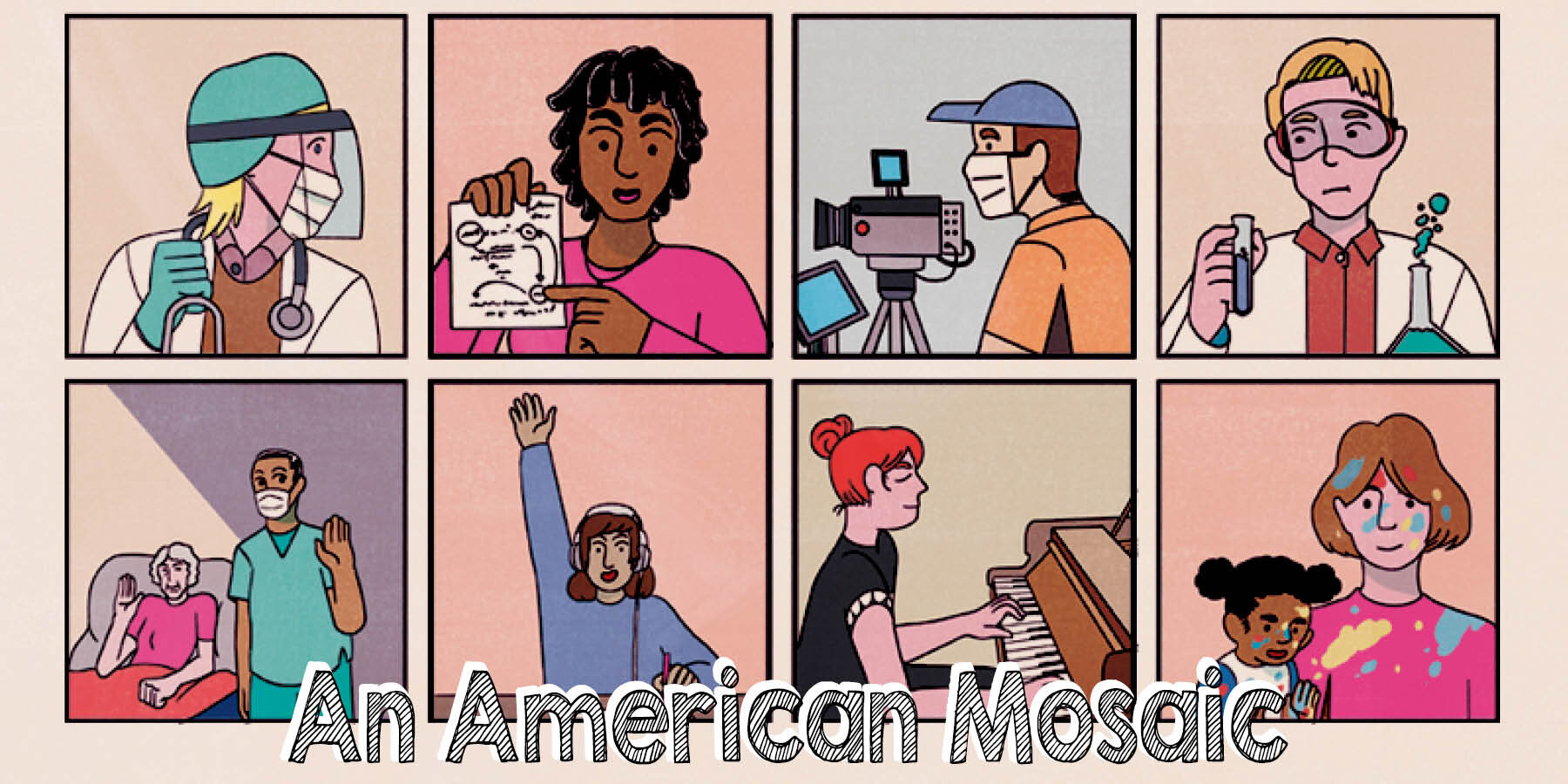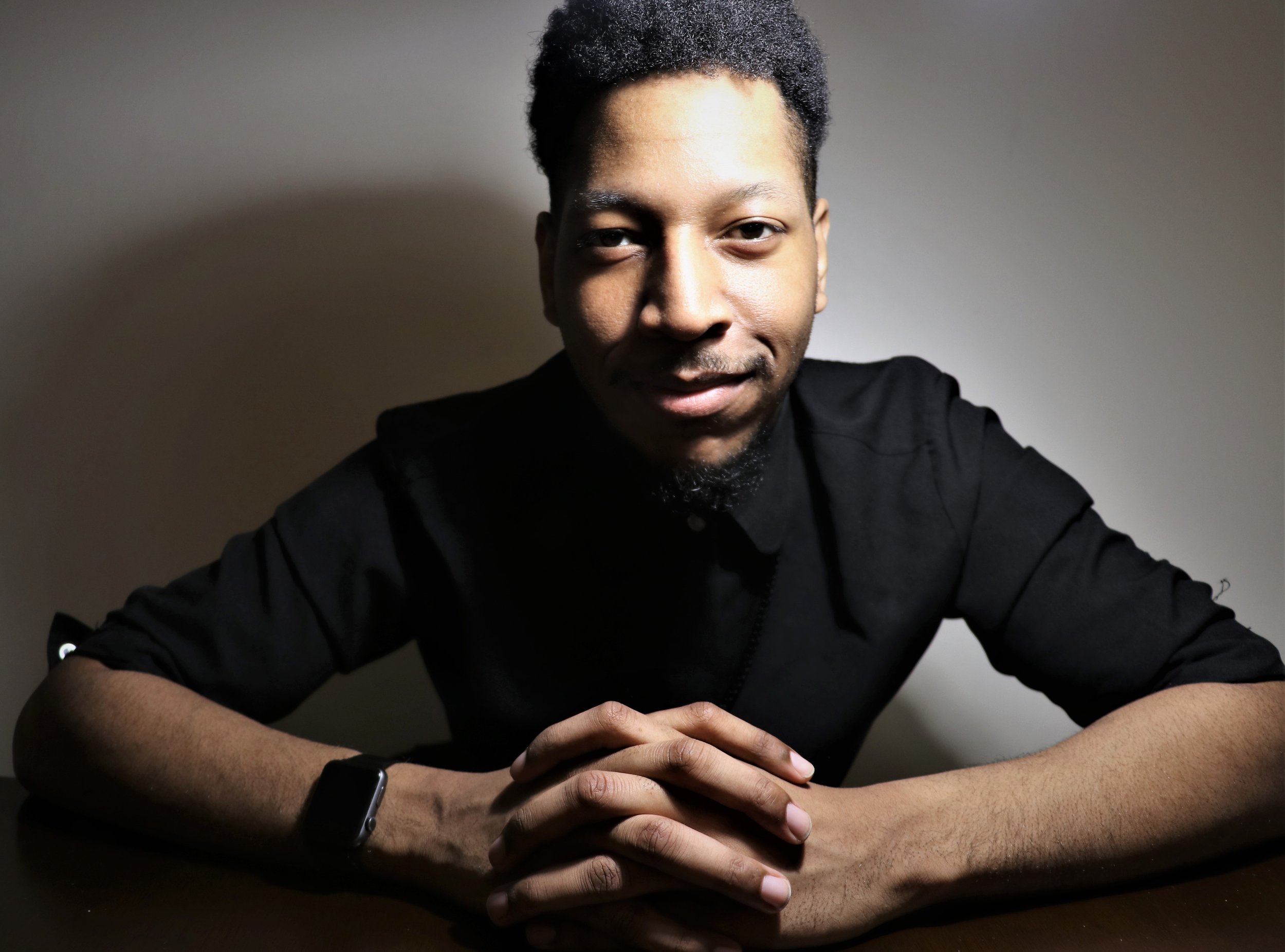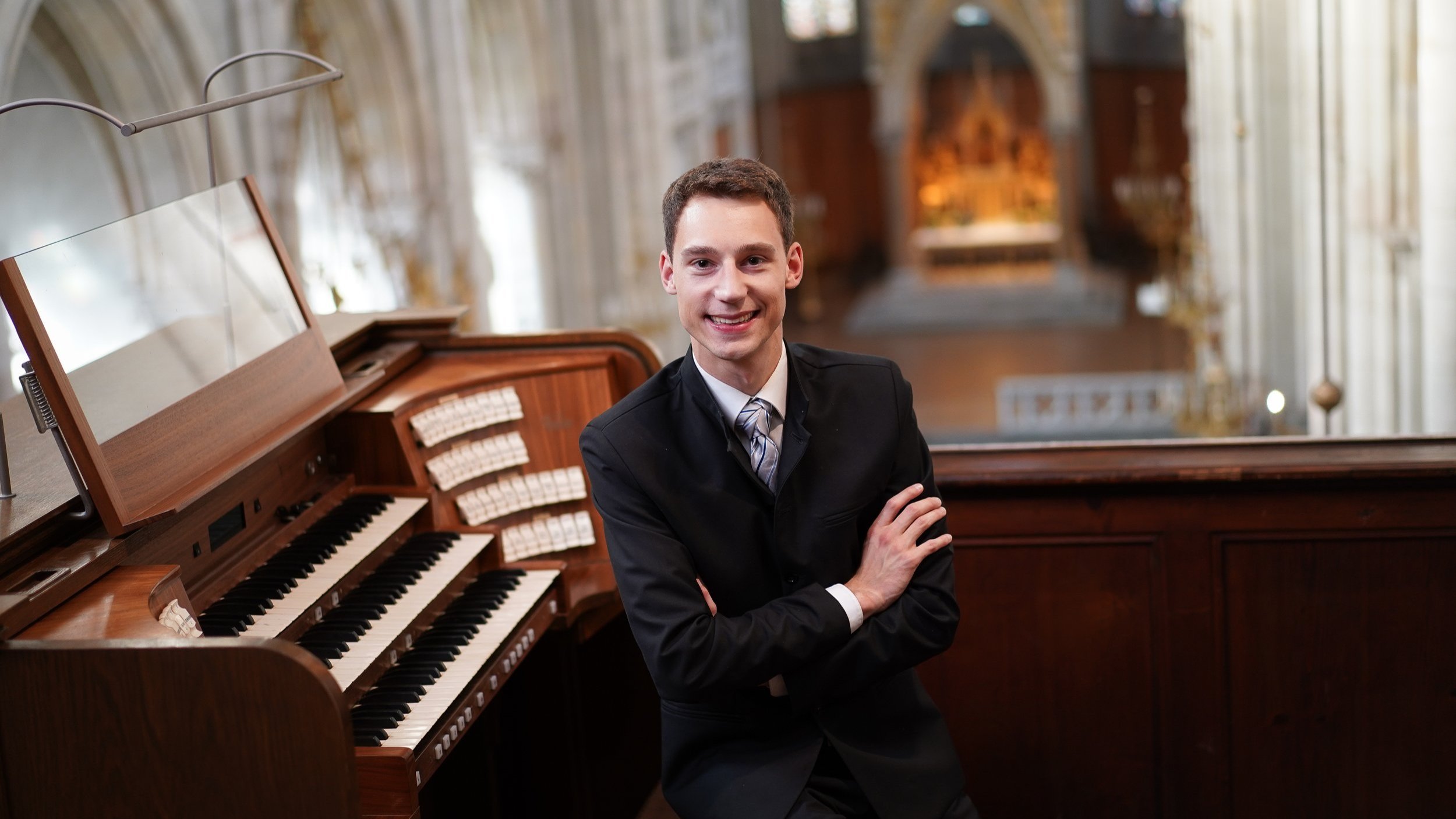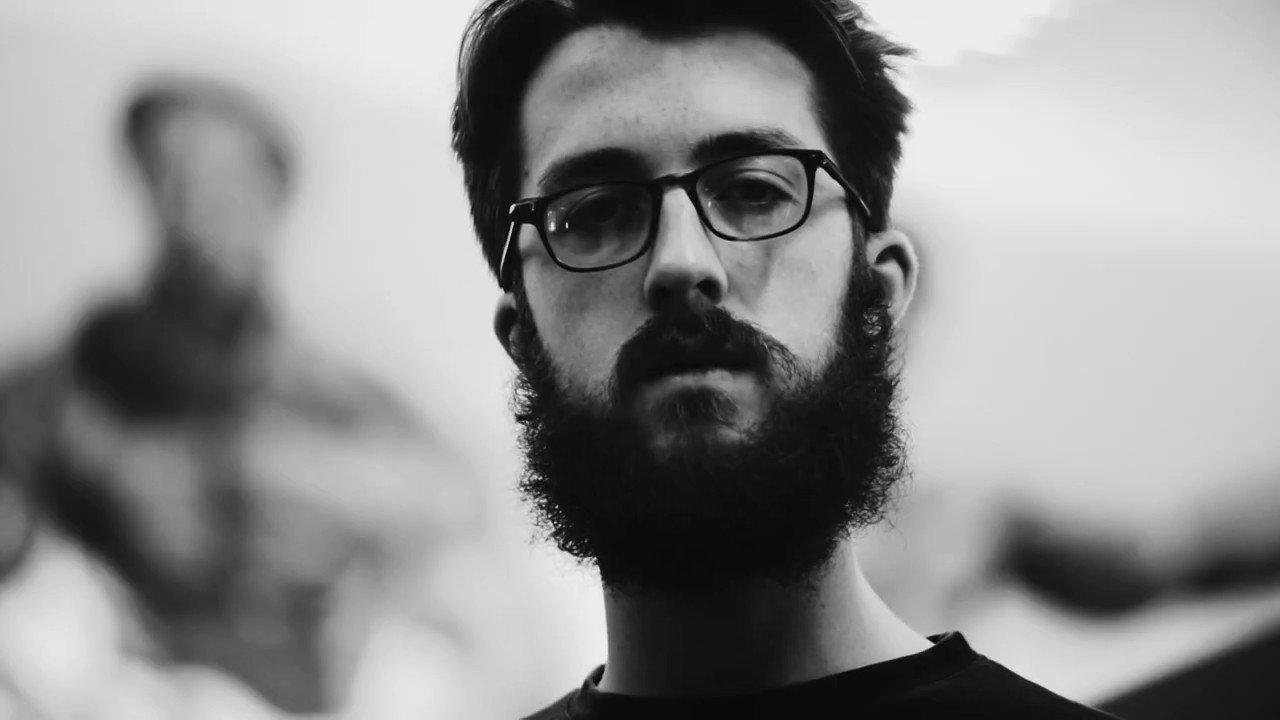An American Mosaic: Honoring, Celebrating, and Memorializing Those Affected by the Covid Pandemic
The COVID-19 pandemic perhaps all but demands an artistic response. A commission from the Oregon Bach Festival, Richard Danielpour’s An American Mosaic provides just that in an expansive piano work written for Simone Dinnerstein that at its core reflects upon the various segments of American society united by the shared experience of the pandemic.
I had the opportunity to speak with composer and pianist ahead of the December 6 streaming premiere, and both offered fascinating insights into the work. Danielpour spoke of the stress and anxiety and consequent difficulty sleeping while confined to his home as the pandemic took course. In such challenging times, he found the music of Bach to be a source of light and a much-needed antidote to the news and the troubling political patois. It was Dinnerstein’s noteworthy recordings of the inventions and the Goldberg Variations that especially resonated.
Wanting to express his profound gratitude, Danielpour reached out to Dinnerstein by way of Michael Anderson, Director of Artistic Administration at the Oregon Bach Festival, resulting in what the composer called one of the “most enthusiastic fan letters” he’d ever sent another musician. Danielpour had previously collaborated with OBF in 2018, writing the large-scale oratorio The Passion of Yeshua — the subsequent recording of which has just received three Grammy nominations. Despite being occupied with writing the libretto for the upcoming operatic project Grand Hotel Tartarus, it was here that An American Mosaic began to take shape: a solo piano piece for Dinnerstein paying tribute to the “real heroes” of the pandemic.
Almost prophetically, the timing would be such that the completed work would premiere as part of OBF’s virtual offerings at the end of a difficult year, by which point the pandemic would likely be at its worst — offering a musical respite to all, much as Dinnerstein’s Bach recordings did for Danielpour several months prior.
Collaboration in time of pandemic
This was certainly a collaboration emblematic of our time, undertaken entirely remotely between the Los Angeles-based composer and New York-based pianist, thereby spanning the country that the resultant work embraces. From their initial phone call, Dinnerstein noted that Danielpour “had a very distinct outline in his head before he began composing of the different movements that he wanted, how he wanted the piece to be structured, and different kinds of compositional techniques he wanted to use.” Composition began in June and was completed on August 5; Danielpour would send Dinnerstein completed material along the way, affording the pianist the opportunity to be immersed in his language and style.
On working with a living composer, Dinnerstein explained “if I’m playing a piece of music by Bach, I have a lot of context for how I’m going to approach the music, but because I’ve never played any of Richard’s music it was all new to me. As I began to get more acquainted with his harmonic language and his style, I had various questions about the music…it’s always nice when you start to be able to catch a composer’s mistakes because it shows that you’re starting to understand how they work. So I became familiar enough with his harmonic language that I could tell if there was a misprint!”
In opting for the solo piano as the medium of choice, Danielpour cited the logistical challenges of an ensemble performing under Covid restrictions, as well as his affinity for writing for the instrument — his Preludes in particular have established a firm place in the piano repertoire. It further seems fitting that the solitary nature of the piano mirrors one’s experiences during quarantine. In a similar vein, the OBF virtual premiere was originally planned to be filmed at the Mechanics Hall in Worcester, Massachusetts — a pre-Civil War era edifice steeped in American history, indeed an apt venue for such a piece — but the increasing virus positivity rates precluded the possibility of travel, and Dinnerstein instead recorded the program from her home in Brooklyn, New York. The pianist had previously recorded an album in September of Schubert and Glass from her home to fine results, and moreover, commented that “there’s something very fitting about recording a piece about the pandemic in my house, when everyone is housed down at this point, so it seems appropriate and pertinent to do it that way.”
A further commercial recording of the work is slated for release in 2021.
The presence of Bach
It was Bach that first connected Danielpour to Dinnerstein, thereby setting in motion the course of events by which An American Mosaic came to be. It is perhaps useful to bear in mind the specter of Bach when listening to the latter work. While there aren’t intentional references to Bach, Danielpour explains he is a composer who “lives in all of us,” and moreover, An American Mosaic makes extensive use of chorale and counterpoint, compositional techniques that certainly speak to Bach.
The OBF performance - along with the forthcoming commercial recording — is fittingly juxtaposed with a trio of Danielpour’s Bach transcriptions, conceived as a suite in their own right. The touching Agnus Dei from the Mass in B minor serves as the centerpiece, flanked by a chorale and the final chorus from the St. Matthew Passion. These are welcome additions to the litany of Bach transcriptions available to pianists. Danielpour reminisced that it was after encountering the St. Matthew Passion at an impressionable age that he knew he wanted to be a composer, further remarking that despite being a composer of the 20th- and 21st-centuries, it’s not something on the order of the Rite of Spring that serves as a guiding light, but rather a work dating from 1727!
The music: structure and approach
Writing and performing a work on a subject matter so topical and so emotional is surely no easy task. The composer explained that he wrote with the heart first, in such an approach the music flowed organically and nothing was forced or contrived. The structure of the piece was meticulously mapped out prior to composition: 15 movements, each paying tribute to a certain population. The penultimate “Prophets & Martyrs” movement was a later addition. Bearing the dedication “in memory of Black Lives lost” it came about as a response to the killing of George Floyd as well as the disproportionate way in which the pandemic has affected the African-American community.
Four Consolations are important architecturally in that they provide grounding at regular intervals (namely, movements 1, 5, 10, and 15). The composer noted these were inspired by dreams he had in which he was visited by an angel. The inner two are dedicated to major African-American voices we have lost in recent years, namely Maya Angelou and Toni Morrison. One is further referred to Danielpour’s song cycle A Woman’s Life and opera Margaret Garner which sets texts by Angelou and Morrison respectively.
Reflections on listening
Danielpour warned of the perils of being a “musical fascist,” that is, dictating beyond the evocative titles how the listener should respond to a new composition. Indeed, this would hardly be necessary given how approachable and appealing the work is, and one that should certainly resonate with the listener from the onset. Dinnerstein reflects that “this is a piece of music that comes from your heart, in a way it’s very personal. Obviously all music that one composes is personal, but this is a piece that Richard wrote while being confined to his apartment…he was very sequestered when he wrote this. I think there’s a different kind of privacy, to this music, an intimacy to it, an internal world during this — I really related to that. I think that it’s extremely beautiful music and it’s very sincere, and I hope that listeners will receive it.”
In addition to the aforementioned influences of Bach, one can also sense the tradition of American piano music. Dinnerstein suggests an affinity with the music of Philip Lasser, a composer with whom she has also been associated, in that both write music deeply lyrical at heart, but colored by a distinctive use of harmony. Further, the pianist noted some passing allusions to Copland’s Piano Variations, a work she envisions performing alongside An American Mosaic in future recital programs. This speaks to the tradition from which Danielpour comes, having studied with Leonard Bernstein who in turn studied with Copland.
I certainly felt the sincerity and genuineness that Dinnerstein referenced above all upon my listening of the work. Some broad observations: a calming chorale marks the opening consolation (#1), though its stark, barren textures are peppered by unnerving dissonances, perhaps a sign of the daunting road ahead. A playful rambunctiousness is to be had in “Parents & Children” (#3), later echoed in “Teachers & Students” (#13). “Rabbis & Ministers” (#4) is an expansive meditation, while the Second Consolation (#5) that followed showed the composer’s fluency in contrapuntal imitation. “Journalists, Poets, and Writers” (#6) is a movement of great energy, perhaps the work’s most overtly virtuosic in its rhythmic drive and syncopations.
“The Visible Enemy” (#7) is a much darker affair, speaking truth to the corrupt in power. It builds to an agitated climax, only to fade away unresolved. Occurring at roughly the midpoint, “An Elegy for Our Time” (#8) seems to me the emotional heart of the piece, hauntingly beautiful in its wistfulness. Ominous ostinatos characterize “The Visible Enemy” (#9), occasionally assuaged by the chorale texture. “Documentary Filmmakers & Photographers” (#11) is a breathless whirlwind, but with moments of reflection encouraged again by interjections of chorale. “Doctors & Interns” (#12) puts Danielpour’s gift for lyrical melody on full display - another lovely, touchingly affecting highlight. I was further struck by the use of blue notes in “Prophets & Martyrs” (#14) and the deep solemnity of the closing Fourth Consolation (#15).
Clocking in at just over the 50-minute mark, this is a major contribution to the contemporary piano repertoire. It’s a work that will persist in part as an important historical document of the COVID-19 pandemic, but I would further suggest that it transcends time and place in the way that it searches for broader, connective elements as it weaves a multi-faceted tapestry of American society. An American Mosaic makes a singularly strong impression, and I can only imagine it will resonate even more when it can be heard in the concert hall in person — a sure sign that better times have come.
















